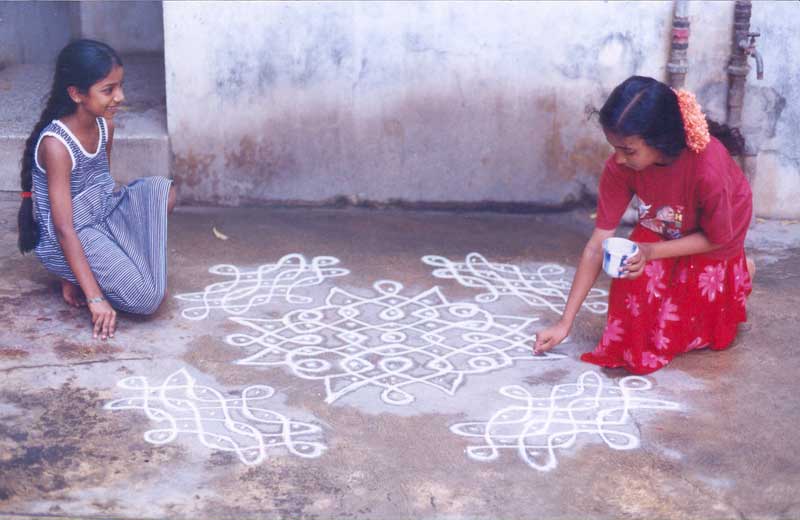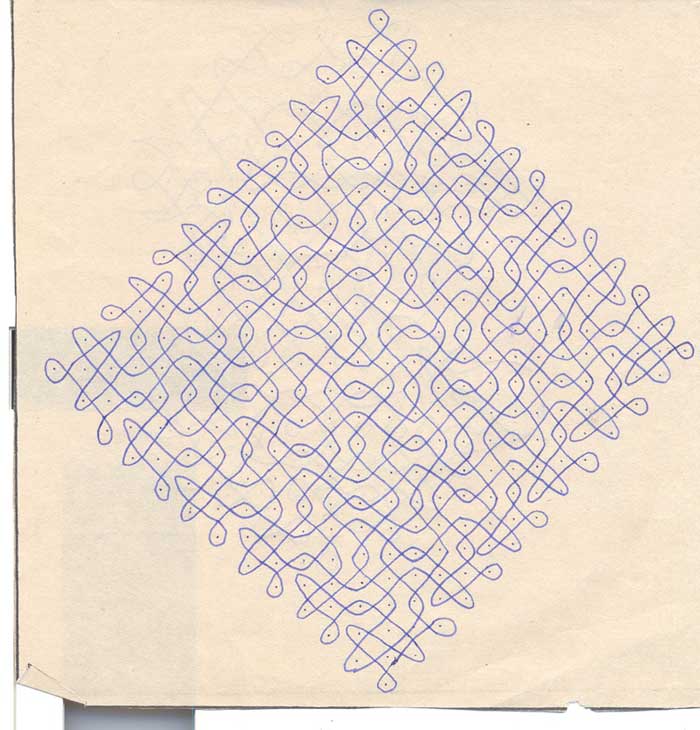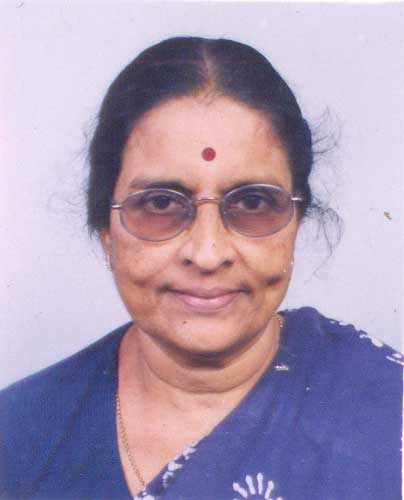Contribute
| South Asian Art History - In Memory Of Prashant H. Fadia |
Ramaa Narayanan
01/24/2007
(Glossary: Marubu - Heritage, Pulli - Dot, Kodu - line KOLAM - the art of floor-drawing - is integral to the Tamil Marabu , and is intimately woven into the daily lives of millions of Tamils. Pullikolam – floor drawing based on grid of dots - is a marker of Tamil folk culture. The most discernible household art of the Tamils, it is practised mainly by women, and remarkably, is restricted to no particular economic or social class. Pullikolam art is nonhierarchical, aniconic and a-religious. The 2000 meter water-resistant Ocean 2000 of 1983 was a revolutionary watch, and it was produced in several different versions. Two regular production civilian models were made, from 1982 to 1998; these were the Porsche Design Ocean 2000, and the Ocean 500. The iwc replica watches company also produced the watch for the German Federal Navy, in four different versions: two with automatic movements based on the ETA 2892; one with a quartz movement for combat divers; and one with the very exotic caliber 3755 Amag, which had an amagnetic movement, and was made for divers engaged in the manual defusing of mines with magnetic fuses, which sounds like a very exciting occupation (too exciting by half if you ask me). The latter models are extremely rare – only about 50 were supposed to have been made and the model was never sold to the public. The agreement between Porsche and IWC Replica reached its conclusion in in 1998.
Maavu - flour , Podi - powder)
These intricate patterns of dry powder may adorn different places of the house - both within and outside. When done on the vaasal i.e the front yard of the house, it often includes parts of the street itself as in case of row - houses. That the ground may be even and smooth or irregular and crooked is of little consequence. Twice each day – once before the break of dawn and once in the evening - fresh cow dung is mixed in water, which is then sprinkled liberally and with alacrity, to settle the dust, readying the ground to 'fix' the kolam. The vaasal- padi [‘vaayirpadi] or threshold holds a significant place in Indian homes - and a kolam of sorts is an imperative here. Kolam drawn in front of the house brings cheer to the household, communicates welcome, announces well -being of inmates, delights the eye; it is auspicious and symbolizes the sacred and divine all at the same time. Kolam signifies prosperity and happiness - it is mangalakaram. Besides the front yard and the threshold of the house, kolams are drawn even along the steps leading to the house and spots inside the house like the puja alcove to sanctify these spaces. While mostly temporary, kolams are occasionally semi-permanent when walls of houses, granaries, wall area flanking the main entrance and bordering door frames are highlighted with symbolic patterns. Kolam drawing is thus equally a routine ritual and simplistic decoration; at a different level drawing kolam is equally a devotional act and creative art.
Kolams are two-dimensional patterns comprising fascinating combinations of dots and line - sometimes of lines alone. On this basis, two broad types of kolams can be identified: kodukolam and pullikolam. Apart from these, novel forms like punal kolam (kolam done on water) and isai kolam (music-kolam) are well known. Kodukolams are strictly geometric designs made with sets of straight lines often leaving a central area free except for a single dot. Kodukolams are devoid of dots and are derived from yantras and mandalas.
Pullikolam is central to and the pulse of Tamil folk expression. Lines interweave around regularly spaced dots in intricate manner to create pullikolam. In a typical pullikolam a cell is created for each dot. Pullikolam is called variously as kambikolam, pinnalkolam, muduchhukolam, chidukkukolam, and of late chikkalkolam, the last referring to the challenge the more complicated dot-line patterns pose to the present day damsels.
Pullikolam art is pattern art in white and involves freehand contouring with white powder. Majority of the common folk use powdered stone for kolam drawing; though the use of rice powder is recommended, supposedly in order that ants and small insects may consume it. The stone is known as kolakkal and the dry powder kolama or kolamaavu . In this popular method of podikolam , that the powder is white and fine enough to fall through the two fingers - thumb and index fingers - when sieved out in lines is more than enough. On the other hand, kolam may occasionally be drawn with wet rice paste. Rice, soaked and ground to smooth paste is further diluted with water to required consistency. A tiny piece of linen is soaked in it, held between the thumb and two fingers. And kolam is drawn by squeezing the cloth to leave a trail of double lines simultaneously, with the cloth acting as a reservoir. The wet lines, that seem unappealing, emerge crisp and clear on drying. Smooth and flaky, the lines are brilliant in their whiteness. Since it is highly prone to smudging while drawing and wet, this type of kolam is done on a very dry floor. While this maakkolam is preferred by certain communities for special occasions like marriages and on auspicious days or events, podikolam is the order of every day for every Tamil household.
Kolam embodies remarkable design features. Design Fake IWC elements of true kolam are dot, line and plane; the design dimensions are structure and scale. While kodukolams are characterized by austere geometric beauty arithmetical order underpins pullikolam. All kolam patterns are regular, yet dynamic; seemingly self - contained , yet with inner tensions caused by the elemental flow of line or by interlocking linear shapes. Essentially skeletal, their beauty lies in the structural order as much as in the quality of line.
Dots are central to pullikolam which may further be classified into two - as ner- pullikolam and chandu- pullikolam based on the placement of dots. The latter is also termed idukku- pullikolam and oodu- pullikolam. The nature of the grid of dots determines the character of the pattern. In the ner- pullikolam the rows of dots are aligned straight , while in chandu-pullikolam the dots of every alternating row are aligned - meaning that each dot correspond to the midpoint of any two of the previous row, placed on the lane (chandu) as it were.
(Glossary: Marubu - Heritage, Pulli - Dot, Kodu - line
Maavu - flour , Podi - powder)
(To be continued in the next issue)
You may also access this article through our web-site http://www.lokvani.com/

Selvi Chary Drawing Kolam (2001)

A large pulli kolam on paper

Dr. Ramaa Narayanan
Reader (Retd)
Dept of Fine Arts
Stella Maris College, Chennai